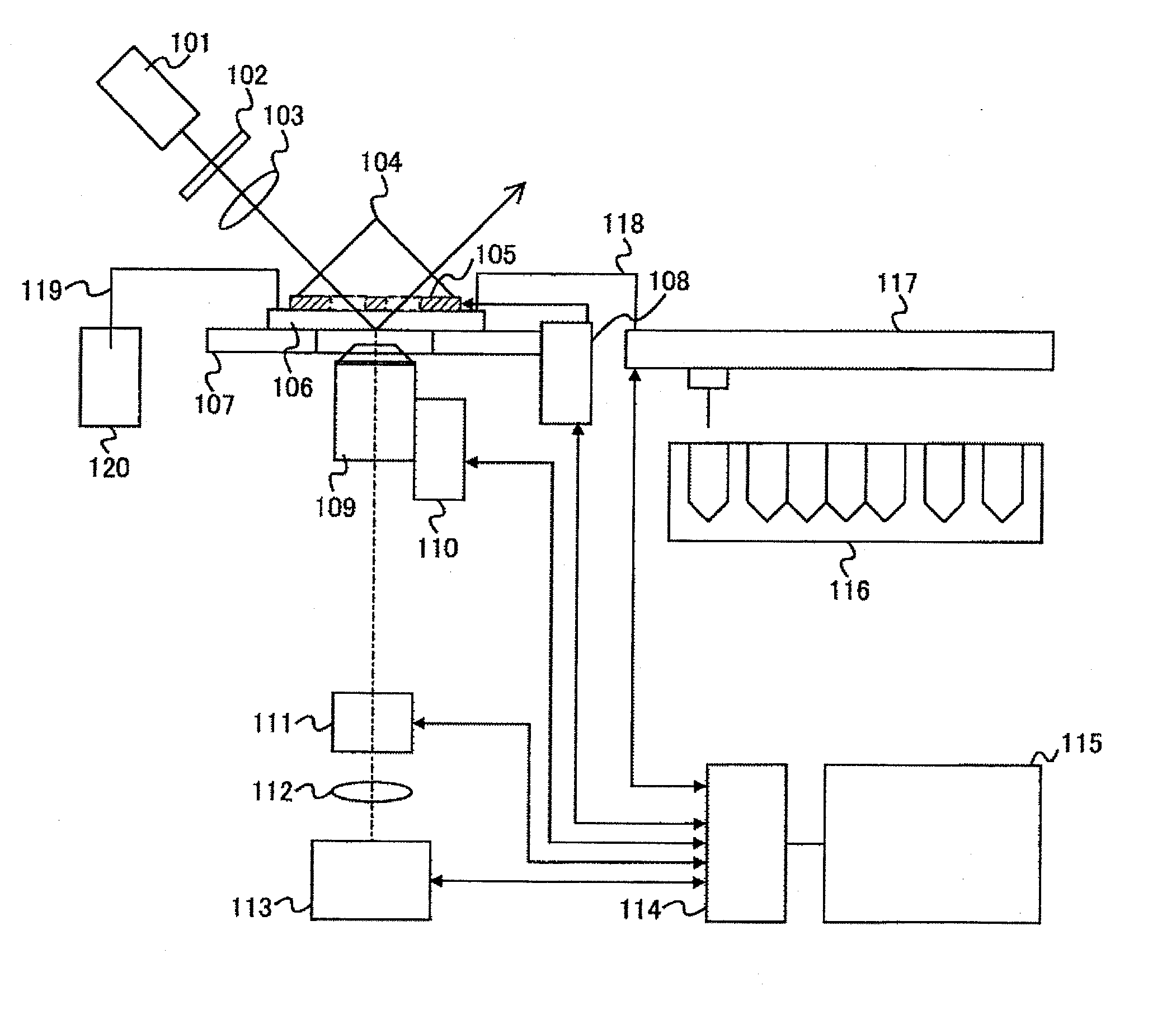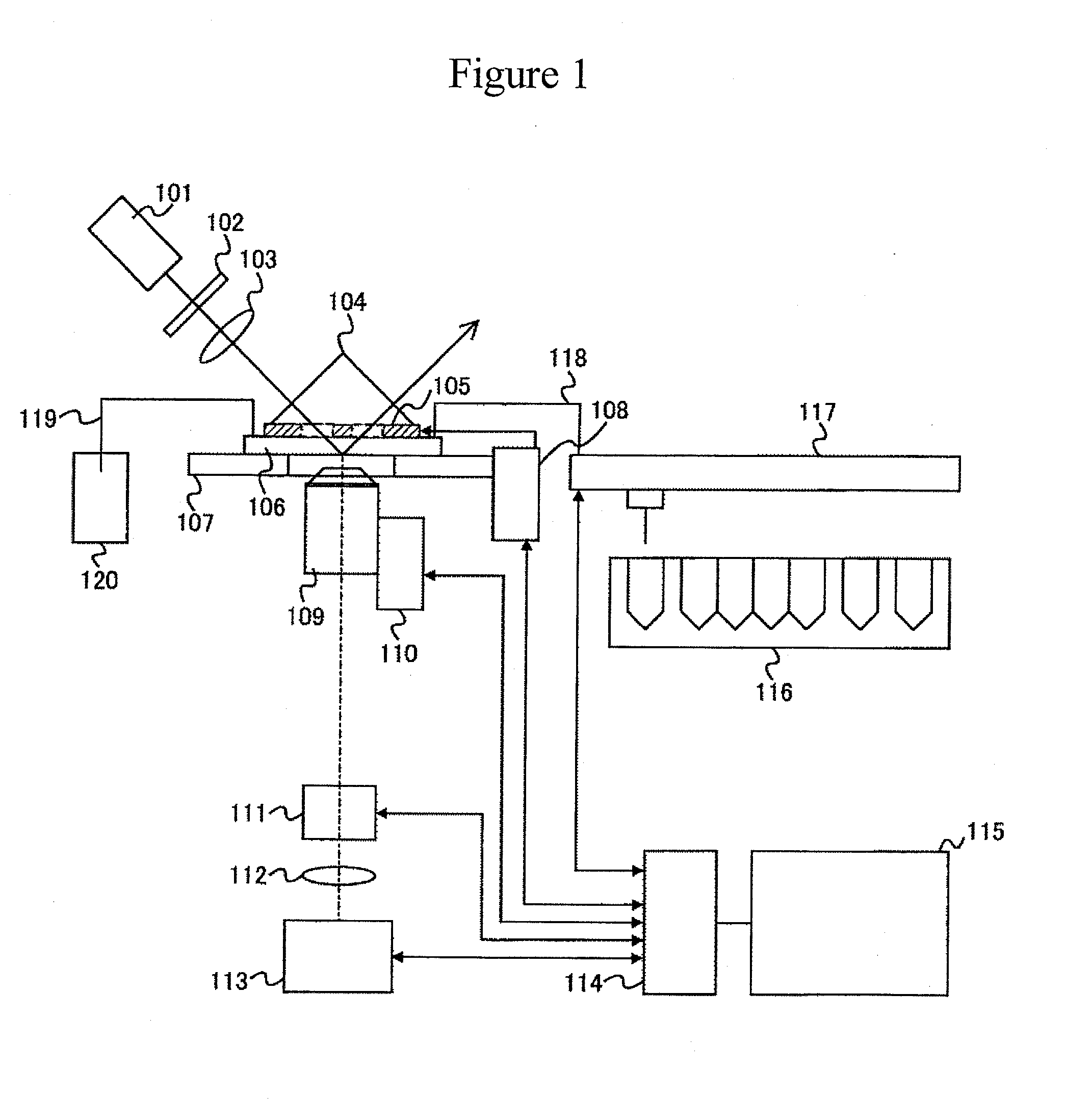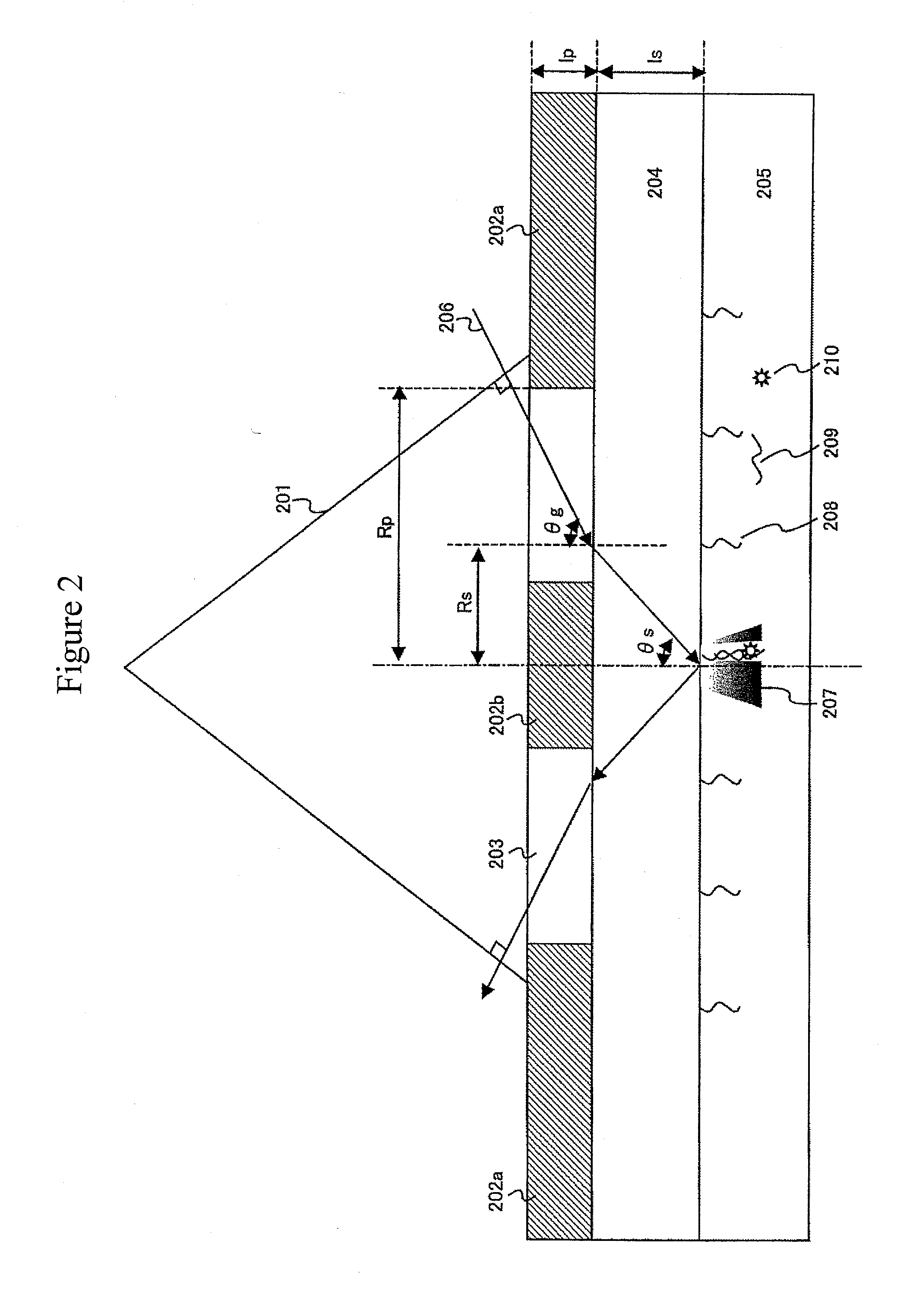Total internal reflection microscope apparatus and method for analyzing fluorescent sample
a total internal reflection and microscope technology, applied in the direction of fluorescence/phosphorescence, luminescent dosimeters, optical radiation measurement, etc., can solve the problems of many technical problems, difficult realization of these methods, and inability to meet the demands only with improvements, etc., to achieve suppressed internal fluorescence of temperature controllers, high precision, and high precision
- Summary
- Abstract
- Description
- Claims
- Application Information
AI Technical Summary
Benefits of technology
Problems solved by technology
Method used
Image
Examples
embodiment 1
[0067]FIG. 1 schematically shows a prism type total internal reflection microscope having a local temperature control function. This microscope is a total internal reflection microscope, and controls temperature by contacting a heating or cooling device having openings at areas of incident light and reflected light with a substrate to be measured.
[0068]A laser beam oscillated by a laser 101 is circularly polarized by a λ / 4 wavelength plate 102, passes through a condenser lens 103 and subsequently is perpendicularly incident onto a prism 104. As a glass for the prism, an optical glass that can be manufactured with very high homogeneity is required. Accordingly, synthetic silica or BK7 or BSC7 with high transmittance and high homogeneity is generally adopted.
[0069]The laser beam passes through an area of an opening formed on a local temperature controller 105, which is temperature-controlled by a local temperature controller controlling unit 108, and then is incident onto a refractive...
embodiment 2
[0089]In this embodiment, two prisms are embedded in two areas of openings in the local temperature controller instead of the glycerol. Hereinafter, differences from Embodiment 1 will be principally described.
[0090]In this embodiment, as shown in FIG. 3, two prisms 301 are embedded in the respective two areas of the openings of the local temperature controller 302. The prisms 301 are intimately contact with the measurement substrate 304. It is preferable that the size of the prism be approximately from 1 mm×4 mm to 4 mm×40 mm. When the laser beam 303 is perpendicularly incident onto the prism 301, since the prism 301 is intimately contact with the measurement substrate 304, totally internally reflection occurs between the measurement substrate 304 and the solution 305 without use of the glycerol.
embodiment 3
[0091]In this embodiment, one prism is embedded in one area of an opening of a local temperature controller instead of the glycerol. Hereinafter, a difference from Embodiments 1 and 2 will be principally described.
[0092]In this embodiment, as shown in FIG. 4, a prism 401 is embedded in one area of an opening of a local temperature controller 402. It is preferable that the size of the prism be approximately from 1 mm×10 mm to 4 mm×40 mm. When the laser beam 403 is perpendicularly incident onto the prism 401, since the prism 401 is intimately contact with the measurement substrate 404, totally internally reflection occurs between the measurement substrate 404 and the solution 405 without use of glycerol.
PUM
| Property | Measurement | Unit |
|---|---|---|
| sizes | aaaaa | aaaaa |
| sizes | aaaaa | aaaaa |
| wavelengths | aaaaa | aaaaa |
Abstract
Description
Claims
Application Information
 Login to View More
Login to View More - R&D
- Intellectual Property
- Life Sciences
- Materials
- Tech Scout
- Unparalleled Data Quality
- Higher Quality Content
- 60% Fewer Hallucinations
Browse by: Latest US Patents, China's latest patents, Technical Efficacy Thesaurus, Application Domain, Technology Topic, Popular Technical Reports.
© 2025 PatSnap. All rights reserved.Legal|Privacy policy|Modern Slavery Act Transparency Statement|Sitemap|About US| Contact US: help@patsnap.com



